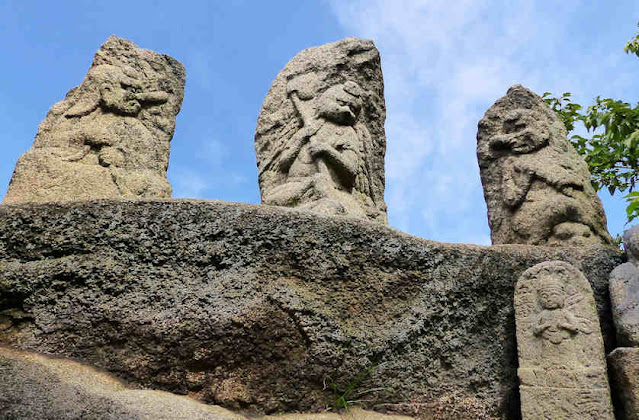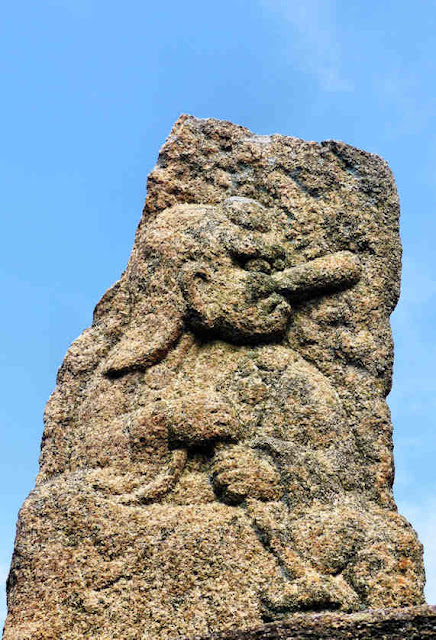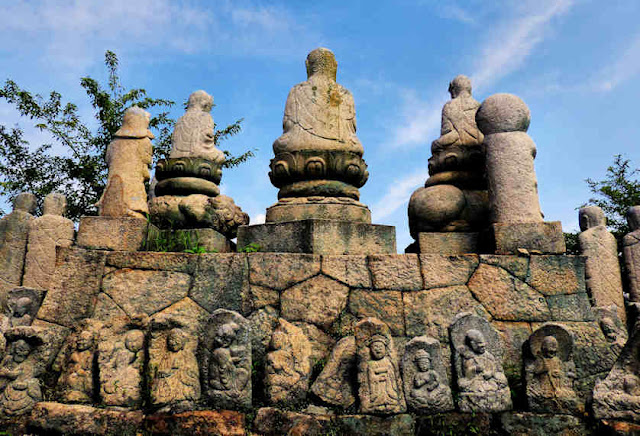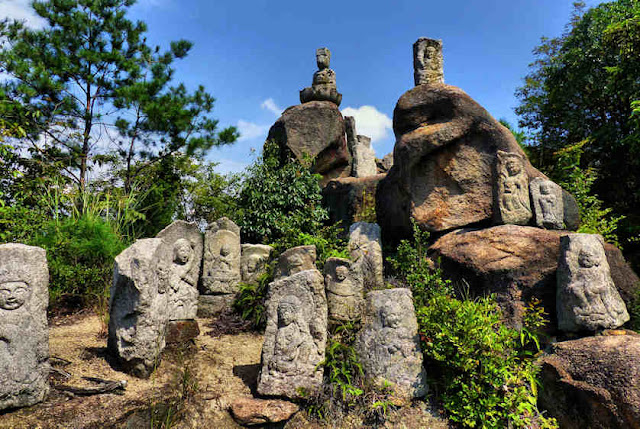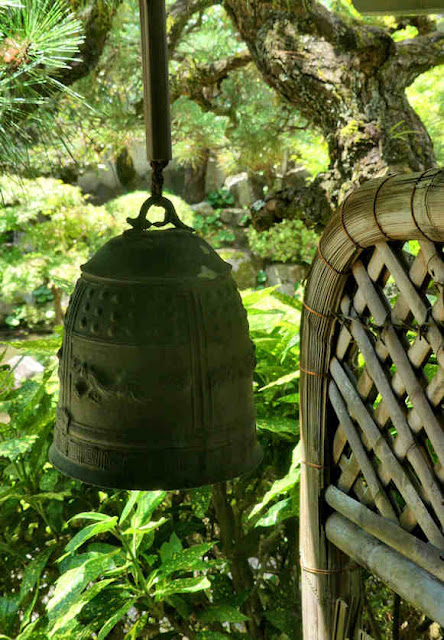Mount Shirataki is a 227 meter high mountain in the north of Innoshima, one of a group of islands un the Seto Naikai, the Inland Sea between Hiroshima and Shikoku.
With outcroppings of bare rock, it was exactly the kind of place that yamabushi used to practise their austerities in what became known as Shugendo.
It also offered great views over the surrounding waters and channels between the islands and so the Murakami Clan, who used Innoshaima as one of their bases, built a small Kannon Hall near the top and used it as a watchtower.
There are several small shrines and halls scattered around the summit.....
But the biggest remains the cluster of buildings around the Kannon-do.
As a nod to its Yamabushi history, there is a triad of Tengu relief carvings....
Almost all the statuary on the mountaintop is owed to one man, Denroku Kashiwara.
He was born on the island in 1781. He became relatively wealthy as a merchant,
At the age of 42 he is said to have attained enlightenment and practised zazen on the mountaintop.
With a disciple and stonemasons from Onomichi he began erecting statues in 1823 but seriously began a few years later.
He founded a new religion that was named Ichikan-kyo which is no longer active.
Ichikan-kyo combined Buddhism, Shinto, Confucianism, and Christianity, with Christianity itself being outlawed.
In 1828 he was "interrogated by domain authorities but released.
He died shortly afterwards, generally believed to have been poisoned by the authorities.
His disciples carried on and all the statues were completed in 1830.
I visited on my way to the next island to visit the next temple on the Chugoku Kannon Pilgrimage, so came up the eastern side of the mountain,
I left down the western slope which is the main entrance and so passed through the Nio gate when leaving.





